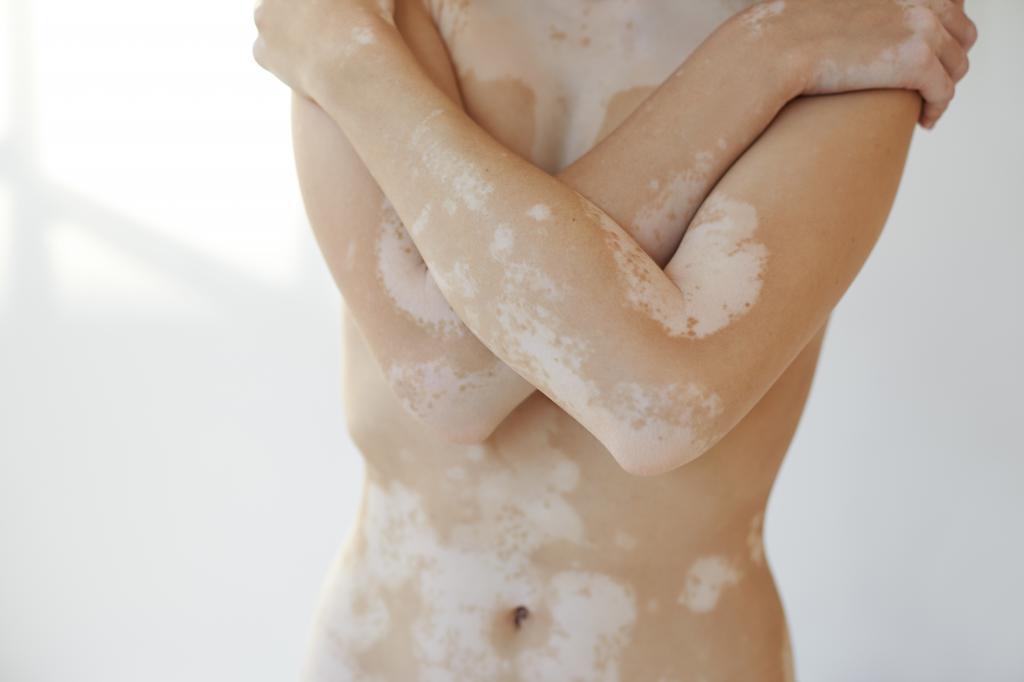

Vitiligo is a skin disease of unknown origin, where white areas from pigment loss are seen. Most parts of the body, including the face, lips, hands, arms, legs and genital areas, may be affected. It is seen in 1% of the world population and equally affects male, female and all races.
Vitiligo; Affects 1 or 2 people in 100 patients; Although it can be seen from infancy to old age at any age, half of the patients begin before 20 years old and 20% have a family history. Vitiligo is not caused by any internal organ disease; therefore, many patients have good general health. Vitiligo is not contagious.
What are the causes of vitiligo?
The pigment called melanin determines the skin, hair and eye color and is produced in cells called melanocytes. If these cells die or not produce melanin, the skin becomes lighter or completely white. It is not known why this is, but there are 4 main theories:
1- There may be a genetic abnormality causing melanocytes damage
2- The body's immune system can break down the melanocytes, detect the pigment as a foreign body and destroy it.
3- Abnormal functioning nerve cells can make toxic substances that can damage melanocytes
4- Pigment producing cells can destroy themselves. In making pigment, toxic products can be produced and can break down melanocytes.
How is Vitiligo formed?
In vitiligo, the body makes autoantibodies against their melanocytes and damages them; the same autoantibodies can cause damage to other organs such as thyroid. Therefore, other autoimmune diseases may occur simultaneously with vitiligo. Vitiligo can be triggered by sunburn. In light-skinned individuals, the difference between vitiligo areas and normal skin becomes more pronounced in the summer, whereas darker skins are more noticeable throughout the year.
How to diagnose vitiligo?
White areas of the skin can be seen not only in vitiligo but also in other diseases. The differential diagnosis of these white areas is done by a dermatologist. If necessary, skin biopsy can be obtained for definite diagnosis, but it can often be diagnosed by the appearance of clinically white areas.
Is it a disease with vitiligo treatment?
Vitiligo is a treatable disease, but the exact cause of vitiligo is unknown, so the results of treatment may vary. Different treatment options are available and these treatments should be used for at least 3 months. The choice of treatment must be agreed with the dermatologist.
Is there a place for herbal products in the treatment of vitiligo?
Do not apply any medication (pill or cream) that is said to be herbal but not approved by the Ministry of Health, please consult with your doctor.
What is used in the treatment of vitiligo?
1. Creams: Cortisone creams: Cortisone creams that are suitable for age and involvement, especially in early period are useful. However, for a long time, the use of non-Dermatologist uncontrolled skin thinning, vascularization, acne, hair can occur many side effects, such as. Creams containing tacrolimus and pimecrolimus: can be used in the treatment of dermatologist control.
2. Phototherapy (Light therapy): Treatment using different wavelengths of ultraviolet light. Most commonly PUVA, local PUVA and narrow-band UVB treatments are used. Phototherapy must be performed under the control of a Dermatologist. Solarium is a device used for cosmetic purposes, it should never be used for treatment, it can cause many conditions from burn to skin cancer.
3. Grafting: Skin transplantation from the intact skin area to the area of vitiligo has been useful in very few patients and is not performed in many countries. Generally, no pigmentation occurs in the treated areas.
4. Depigmentation treatment: In some patients with severe involvement, the best solution is to remove the pigment remaining in the skin and make the skin completely white. It is made with chemical called monobenzyl ether. This treatment takes approximately 1 year to complete. Pigment loss is permanent.
5. Sun protection: White areas in vitiligo can easily burn in the sun, so sunscreen creams with at least 30 sun protection factors should be used continuously. Only when entering the sea or sunbathing cream is not enough. Your sunshine should be at the time and hours recommended by your doctor. Sunscreen and sunglasses should be used.
6. Camouflage: If no treatment is provided, camouflage can be applied by closing the white areas with permanent make-up.
7. Psychological support: Vitiligo is a disease that disrupts the external appearance of the person, it can cause stress, self-confidence, unhappiness and depression in individuals, as well as tend to increase with psychological factors, so patients need to stay away from stress and seek help from a psychiatrist if necessary. .
8. Diet: Vitiligo is not related to diet, but as recommended in any case, healthy and abundant antioxidant nutrition is our recommendation in vitiligo.
What is the course of vitiligo?
The course and severity of the disease vary according to the individual; Usually it progresses slowly; In severe cases can cover the whole body. Some patients come back with some color and rarely recover completely spontaneously.